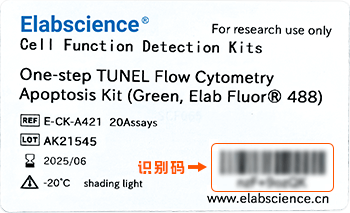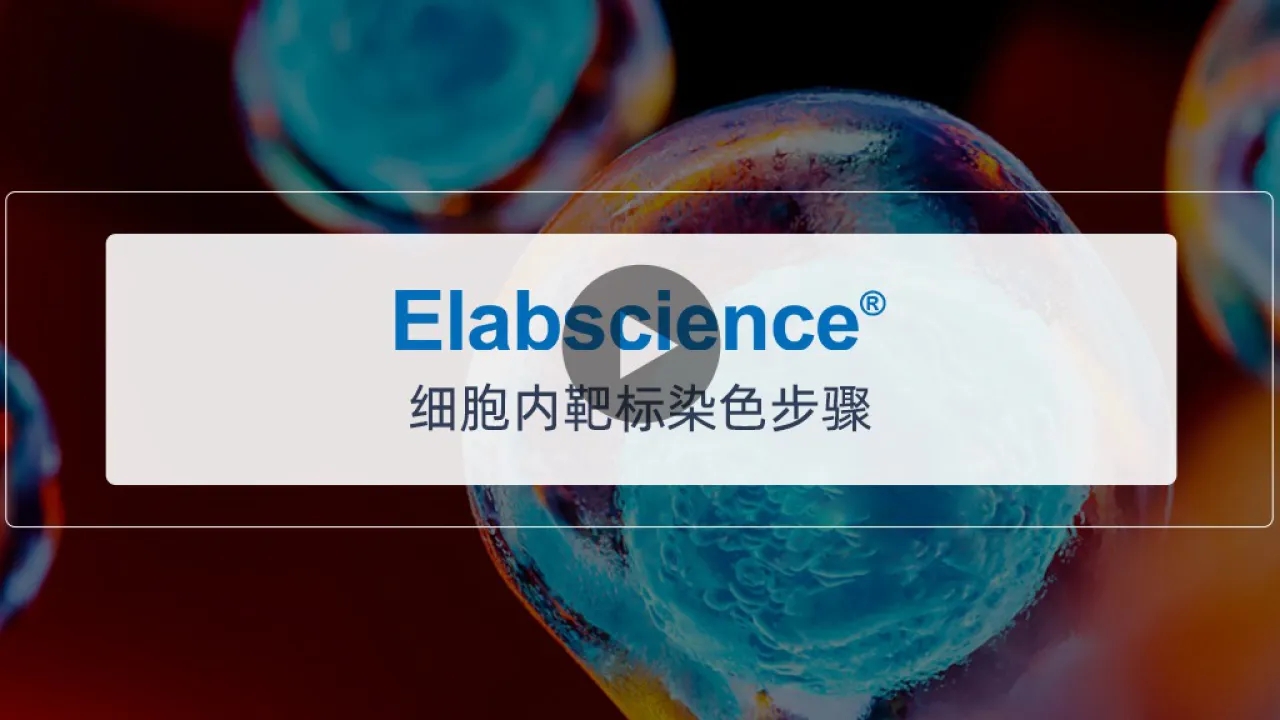APC Anti-Mouse CD206/MMR Antibody[C068C2]
![APC Anti-Mouse CD206/MMR Antibody[C068C2]](http://files.elabscience.cn/assets/images/loading.png)
Price:
- 应用性: FCM;ICFCM
- 亚型: Rat IgG2a, κ
- 宿主: Rat
| Alternate Names | MMR, MR, MRC1, macrophage mannose receptor, mannose receptor |
| Cellular Localization |
Membrane;Endosome
|
| Clone No | |
| Isotype | Rat IgG2a, κ |
| Leadtime |
咨询
|
| Background |
CD206, also known as mannose receptor (MR), is a 175 kD type I membrane protein. It is a pattern recognition receptor (PRR) belonging to the C-type lectin superfamily. MR is expressed on macrophages, dendritic cells, Langerhans cells, and hepatic or lymphatic endothelial cells. MR recognizes a range of microbial carbohydrates bearing mannose, fucose, or N-acetyl glucosamine through its C-type lectin-like carbohydrate recognition domains, sulfated carbohydrate antigens through its cysteine-rich domain, and collagens through its fibronectin type II domain. MR mediates endocytosis and phagocytosis as well as activation of macrophages and antigen presentation. It plays an important role in host defense and provides a link between innate and adaptive immunity. Recently, MR on lymphatic endothelial cells was found to be involved in leukocyte trafficking and a contributor to the metastatic behavior of cancer cells. It suggests that MR may be a potential target in controlling inflammation and cancer metastasis by targeting the lymphatic vasculature.
|
| Abbre | CD206 |
| Swissprot | |
| Host | Rat |
| Reactivity | Mouse |
| Clonality | Monoclonal |
| Isotype Control | |
| Applications | |
| Form | Liquid |
| Concentration | 5 μL/Test |
| Conjugation | APC |
| Conjugation Information | APC is designed to be excited by the Red (627-640 nm) laser and detected using an optical filter centered near 660 nm (e.g., a 660/20 nm bandpass filter). |
| Spectrum |  |
| Storage Buffer | Phosphate buffered solution, pH 7.2, containing 0.09% sodium azide. |
| Storage | This product can be stored at 2-8°C for 12 months. Please protected from prolonged exposure to light and do not freeze. |
| Expiration Date | 12个月 |
| Shipping |
冰袋 |
| Gene ID |
-
Multifunctional Nanomedicine for Targeted Atherosclerosis Therapy: Activating Plaque Clearance Cascade and Suppressing Inflammation
IF: 15.8 -
Static Topographical Cue Combined with Dynamic Fluid Stimulation Enhances the Macrophage Extracellular Vesicle Yield and Therapeutic Potential for Bone Defects
IF: 15.8 -
Targeting stem-property and vasculogenic mimicry for sensitizing paclitaxel therapy of triple-negative breast cancer by biomimetic codelivery
IF: 14.7 -
Mitigating Doxorubicin-Induced Cardiotoxicity and Enhancing Anti-Tumor Efficacy with a Metformin-Integrated Self-Assembled Nanomedicine
IF: 14.3 -
Oncometabolite D-2HG drives tumor metastasis and protumoral macrophage polarization by targeting FTO/m6A/ANGPTL4/integrin axis in triple-negative breast cancer
IF: 11.4Journal: JOURNAL OF EXPERIMENTAL & CLINICAL CANCER RESEARCH (2025)Reactivity:Mouse -
Resibufogenin protects against atherosclerosis in ApoE-/- mice through blocking NLRP3 inflammasome assembly
IF: 11.4 -
A sustained H2S-releasing nanocellulose-based hydrogel with anti-inflammatory and antibacterial properties for promoting infected wound healing
IF: 10.7 -
Hydrogel loaded with cerium-manganese nanoparticles and nerve growth factor enhances spinal cord injury repair by modulating immune microenvironment and promoting neuronal regeneration
IF: 10.6 -
Selenium-Albumin Nanoaccelerator Hydrogel Promotes Wound Healing by Antibacterial, Anti-Inflammatory and Antioxidant along with Inhibits Scar Formation via Downregulating CD36
IF: 10 -
Curcumin-loaded polydopamine nanoparticles-based antioxidant scaffold promote spinal cord repair though dural-regulation of macrophage polarization
IF: 8.7
| E-CK-A105 | 10×ACK Lysis Buffer | 500 mL , 200 mL , 100 mL |
| E-CK-A107 | Cell Staining Buffer | 500 mL , 200 mL , 100 mL |
| E-CK-A109 | Intracellular Fixation/Permeabilization Buffer Kit | 500 Assays , 100 Assays , 50 Assays |
Q1:流式细胞仪分选Raw264.7 M1型和M2型细胞的标志物是什么?分选之后还能培养吗?
大多数做小鼠巨噬细胞分选会用F4/80、CD11b确定总巨噬细胞,然后用CD86测M1型,CD206测M2型,以上只作为一个参考。如果流式分选得到的细胞还需进行培养,建议不要使用CD206,因为CD206需要进行固定破膜操作,细胞会全部死亡。此外,M1和M2的标志物表达量不高,很难分选。
Q2:流式检测小鼠巨噬细胞,要检测M1、M2型巨噬细胞,有哪些推荐?
大多数老师做小鼠巨噬细胞会用F4/80、CD11b确定总巨噬细胞,然后用CD86测M1型,CD206测M2型,但是最终客户要检测哪些指标还是需要客户根据文献以及自己的实验需求自己来决定的,以上可以作为一个参考。
Q3:我要染CD206,需要破膜,那我应该用细胞因子固定液还是转录因子固定液?
建议客户使用胞内因子固定破膜剂,货号为E-CK-A109。
Q4:CD206的流式抗体需要固定破膜吗?
CD206是一个跨膜蛋白,在细胞膜表面和胞内均有表达。我们的抗小鼠的CD206流式抗体可与细胞膜表面及胞内的CD206结合,所以破膜或者不破膜都可以检测到,可根据实验设计选择是否破膜,一般推荐破膜检测。
Q5:有IHC实验应用性的抗体,20μl可以做几张片子?
首先客户需要根据抗体说明书&预实验结果来预估一下抗体的使用量,不同的样本,因抗原的表达量不同,抗体稀释比会有差异的。
例如:某个抗体的IHC实验,预实验确认按稀释比1:50计算,通常情况下,一张切片需要加入稀释后的抗体100μl,也就是一张切片需要2μl抗体,20μl大概可以做10张切片。
Q6:文献查的分子量与说明书上的有异议,同一指标为何有几种分子量?
因为同一蛋白在不同的种类的细胞中可能由于转录后有不同的剪切体、翻译后有不同的修饰方式,比如糖基化、泛素化等,分子量并不是唯一不变的,另外,蛋白官网Uniprot上可以查找到蛋白不同的亚型分子量大小是有差异的。所以文献上查到的分子量与说明书上抗体分子量有些会有一定的差异。(可以多查一些文献参考确认目的蛋白在目标样本中的分子量)。
Q7:抗体是否可以使用在说明书上没有反应性和应用上?
一般抗体的说明书都会列出该抗体经验证适用于何种实验的类型(如: WB、IHC、IP、IF等), 如果抗体说明书没有提及的应用类型,并不意味着该抗体不适用于此种分析应用类型,可能是我们这边没有做相应的验证,或者验证的样本效果不太好,一般如果没有的应用或者反应性不推荐客户使用,请尽量根据说明书列出的已验证的类型来选择适合你实验的抗体。
如果客户想尝试,可以提前咨询技术支持或者购买小规格进行相应实验尝试,但没有做出预期的结果,一般无法提供产品的更换或者退款。
Q8:抗体怎么选阳性对照?
阳性对照的使用是一个实验中确定抗体及检测系统是否正常工作的依据,也是确定待测标本中是否存在待测蛋白的一个依据!尤其是检测的标本不确定是否有待测蛋白表达时。因此当实验没有阳性结果出现时,最好选择实验合适的阳性对照,大部分说明书上都有推荐的阳性对照;或者根据说明书上的SwissProt 或 Omnigene 数据库查找,这些数据库经常会列出该蛋白在哪些组织里面高表达,这些样本可以作为合适的阳性对照。
Q9:如果抗体的Reactivity中没有包含我实验样本的物种,是否提供售后?
抗体说明书中提到的物种是确认可以做的,但不能保证抗体可用于未经验证的物种, 即使序列比对同源性高。抗体是否能识别其它物种样本内的蛋白涉及许多因素,我们无法做出预估。如果没有其它的选择,您必须考虑购买抗体用于未验证的物种,我们建议您将免疫原序列与您的目的蛋白序列进行比对,同源性高的话成功的可能性会比较大。如果您购买的抗体是用于未经验证的物种或者实验应用,一般无法提供产品的更换或者退款。
Q10:一抗的使用浓度是多少?
我们的抗体是浓缩型的,抗体最终使用浓度除了跟抗体本身浓度有关,也跟样本中目的蛋白的丰度有关,所以我们说明书提供的抗体推荐稀释比是一个范围,最终稀释比例是需要您通过预实验确定的,当然您也可以咨询我们的技术团队给您推荐一个合适的稀释比来摸索实验条件。

暂无文件,请在搜索框输入识别码查询相关文件

| 名称 | 状态 | 有效期至 | 操作 | |
|---|---|---|---|---|
| {{item.文件名}} | {{item.status_str}} | {{item.timestamp_str}} | 点击查看 点击预览 |
*注:请在有效期内下载相关文件,过期后页面内将不提供文件下载及预览!











